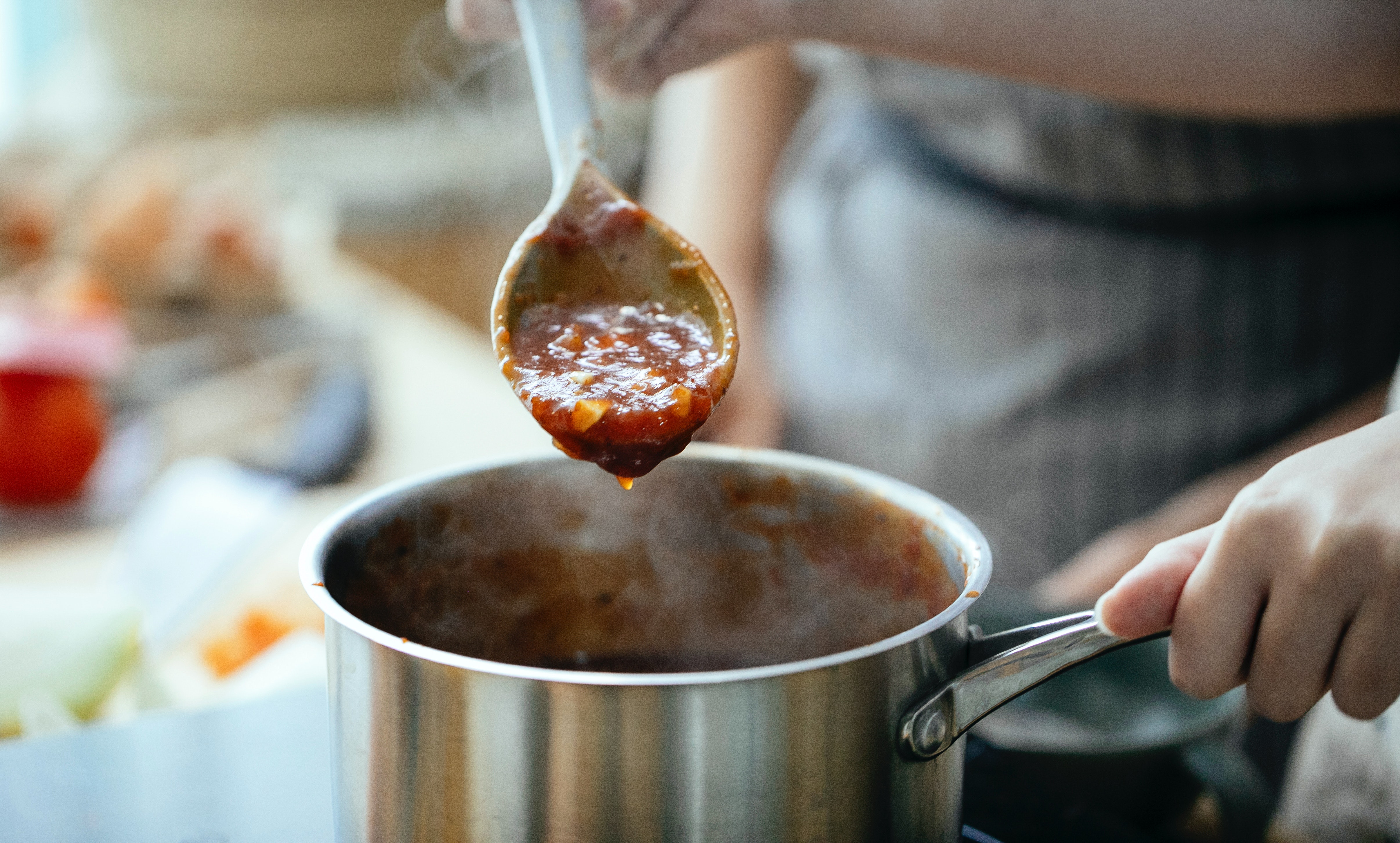Most chefs & culinary professionals will be familiar with a ‘roux’ and the concept of what it is used for, and will on a regular occasion make a roux to make or thicken sauces.
A roux is a combination of fat & flour that is heated in a pan and cooked before adding a form of liquid. Depending on the desired ‘end product’, the liquid you add will change as well as how long you cook out the roux itself.
In most recipes the roux will consist of 50% flour and 50% fat (butter, lard or oil most commonly). The cooking process of the roux will then vary on the desired sauce. A demi glaze or Espagnole sauce will require cooking the mixture down to a ‘blond’ or ‘brown’ roux (which can be done in an oven to avoid burning the mix on a stove) . Whereas a Bechemel or Velute may only need a white roux (but this can be tricky as you want to cook out the flour without colouring the mixture itself)
The variety of sauces you can create from a roux is pretty much limitless when we consider the vastness of velutes. If you can make a stock out of something, it can be transformed into a velute.
When it comes to finishing the cooking part of the roux and beginning to add the stock/liquid, its always best to have the liquid itself hot as this makes the process easier.
An interesting thing to note is where a brown/blond roux is used, you will find that you don’t gain as much yield as a normal white roux. This is because the cooking down of the flour limits its thickening capabilities.
Roux’s can also be made and stored for later. You can have a roux mixture stored in the fridge ready made which can be added to sauces that need thickening up.

